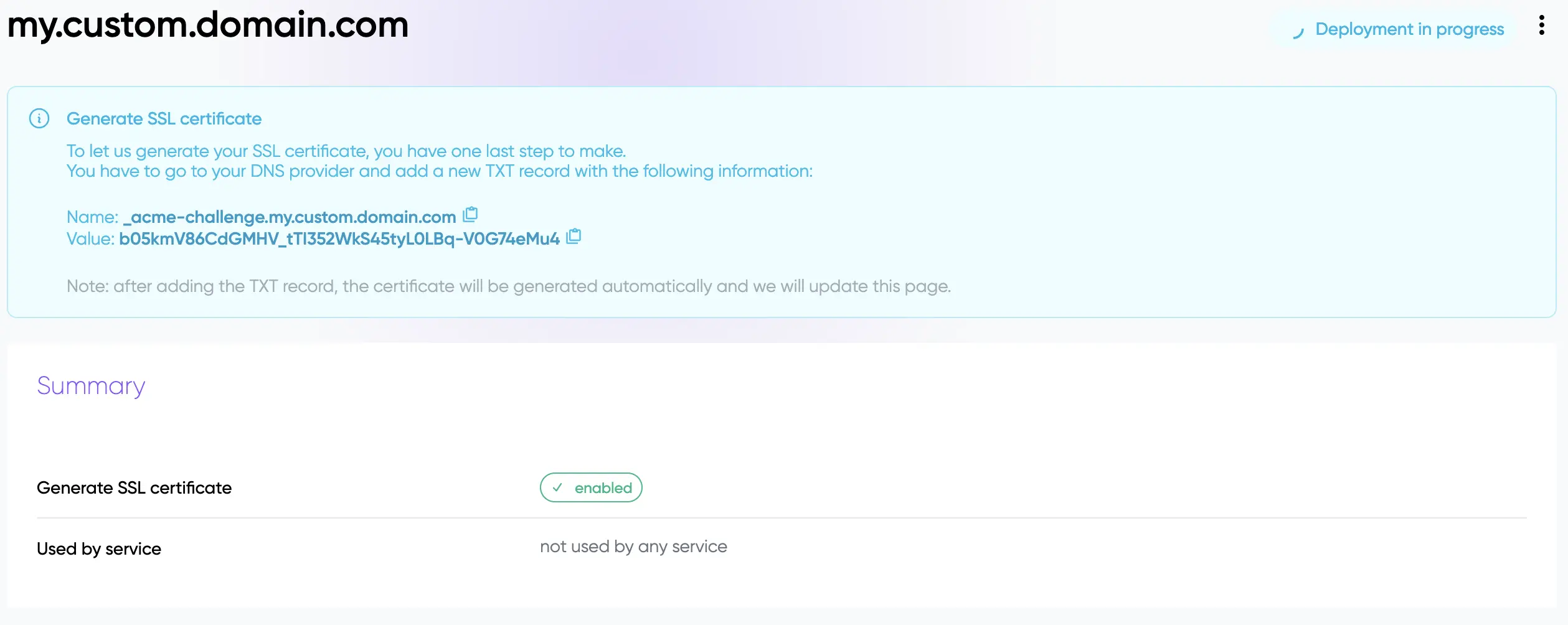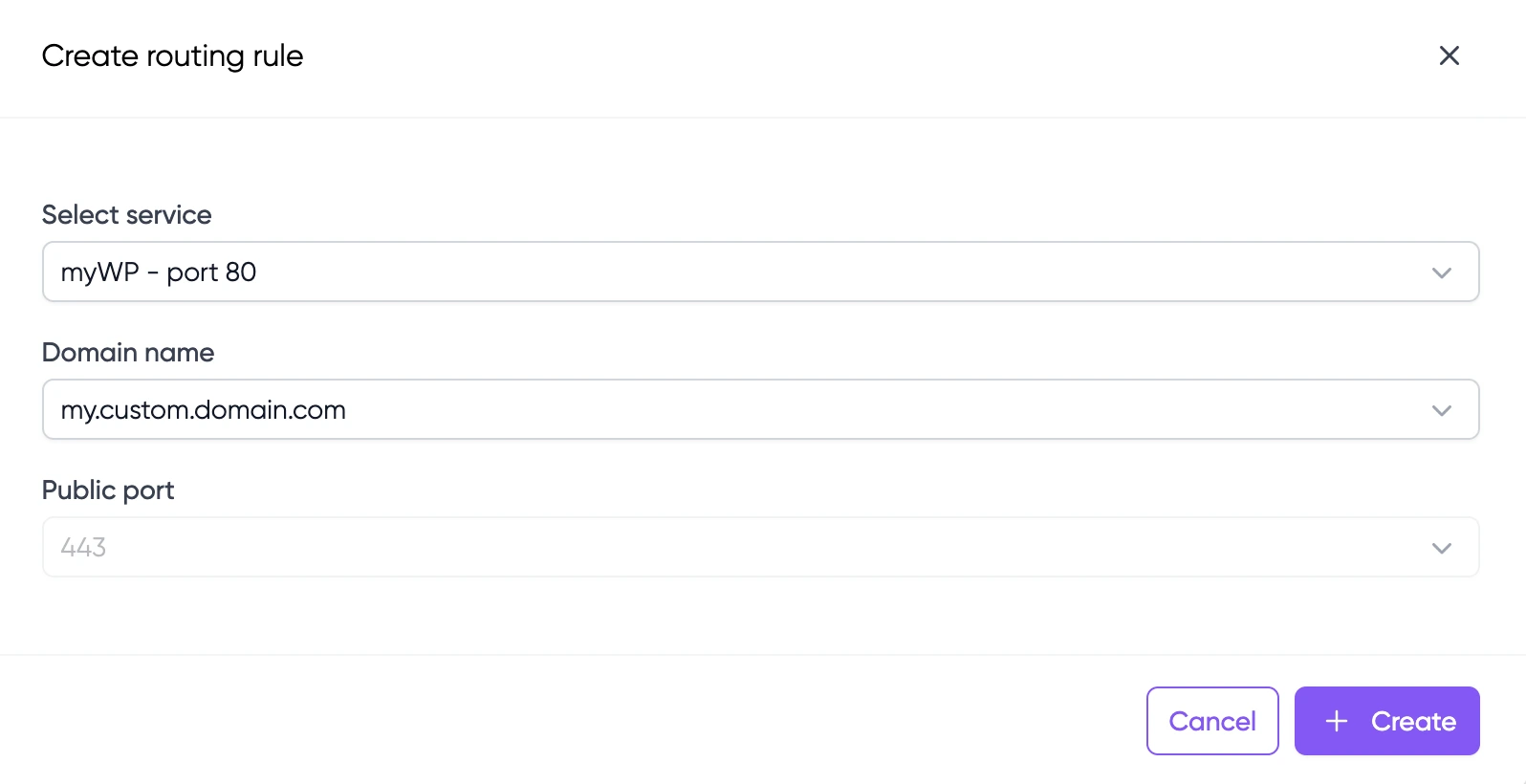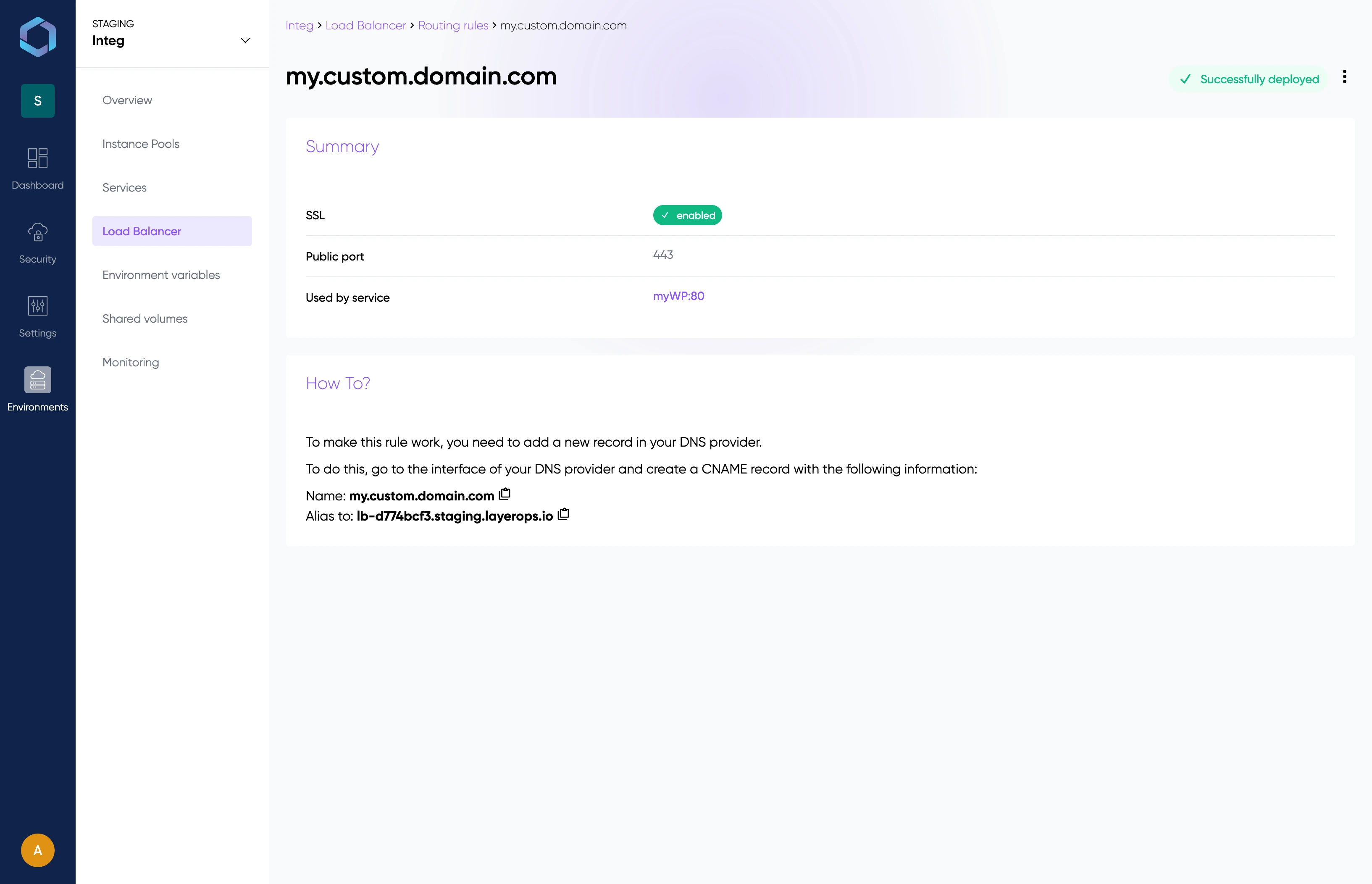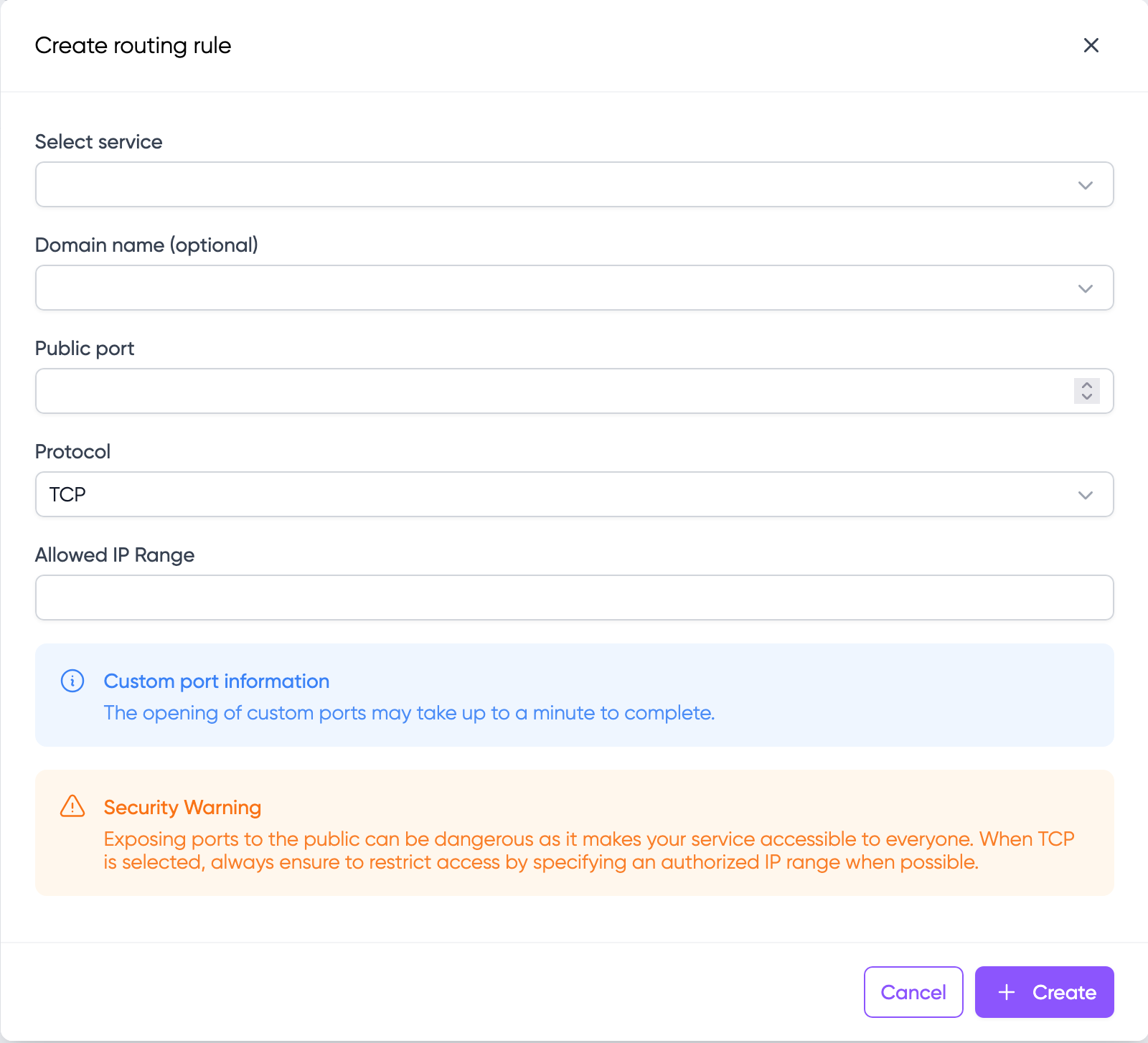Load Balancer
You can find the "Load Balancer" menu on the left when you have selected an environment.
List
On the main Load Balancer page, you'll find the instances that run your Load Balancer. You can see their health status and where they are deployed.

If the status of one of the instances fails, LayerOps will automatically replace it.
Custom Domains
Custom domains allow you to link your own domain names to services deployed with LayerOps. You can use any domain name that you have purchased from a domain registrar.
You can enable automatic SSL (Secure Sockets Layer) certificate generation for your custom domains. SSL certificates secure the communication between users' browsers and your services, ensuring data privacy and encryption. By enabling SSL certificates, you get HTTPS for your custom domains. LayerOps handles all certificate renewals automatically.

After creating a custom domain, you will be redirected to the custom domain list. Click on your new custom domain to see instructions for generating your first SSL certificate (future renewals are automatic). This verification step is required to prove that you own the domain.

Routing Rules
Routing rules define how traffic is directed from your custom domains to your services. They allow you to map domains to specific services and ports.

After creating a rule, you will redirected to the list of routing rules. To complete the setup, click on your new rule to open the configuration page. There, you need to:
- Go to your DNS provider that manages your custom domain
- Create a new CNAME record pointing to the provided alias

Custom Ports/Protocol
Custom ports allow you to expose services on specific TCP or UDP ports, providing direct access to your applications without going through HTTP routing. This is particularly useful for applications that use custom protocols, databases, or any service that needs to communicate over a specific port.
You can restrict access to your custom ports by specifying allowed CIDR ranges, ensuring that only authorized clients can connect to your services.
